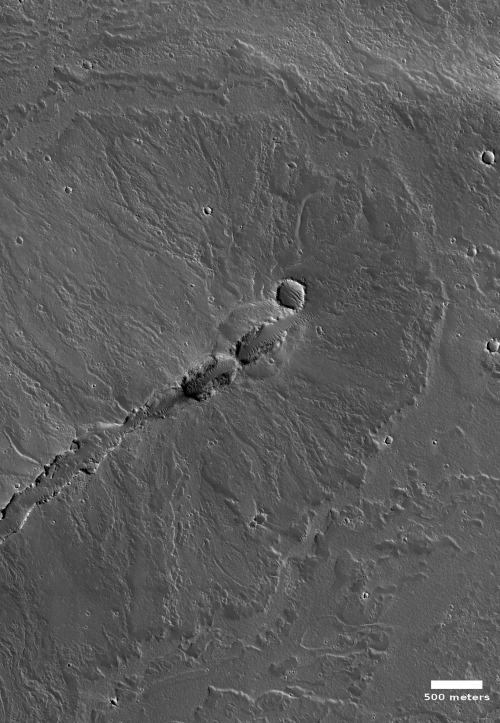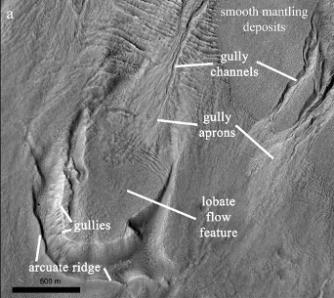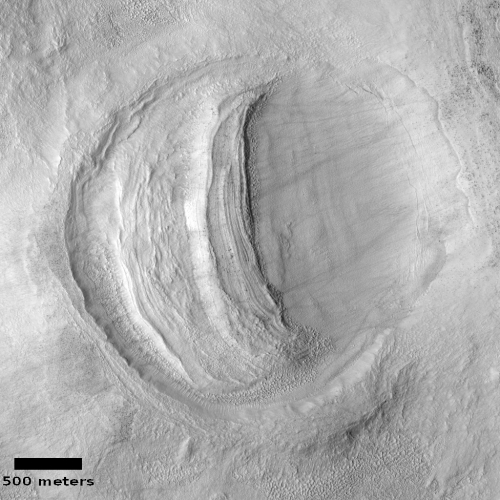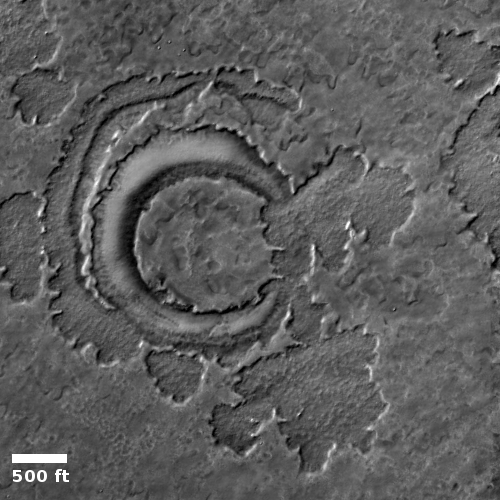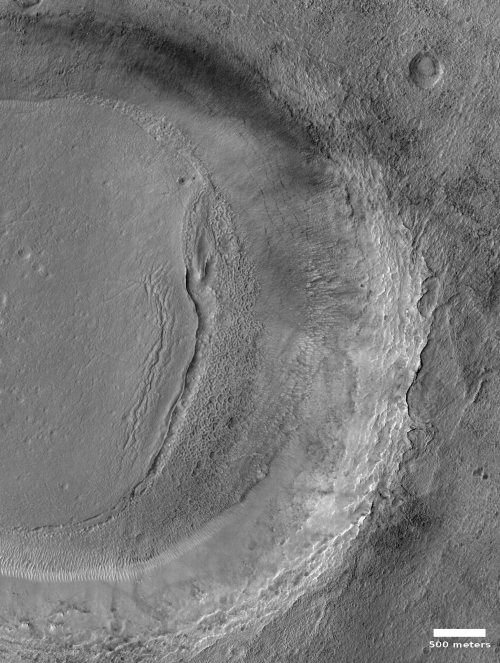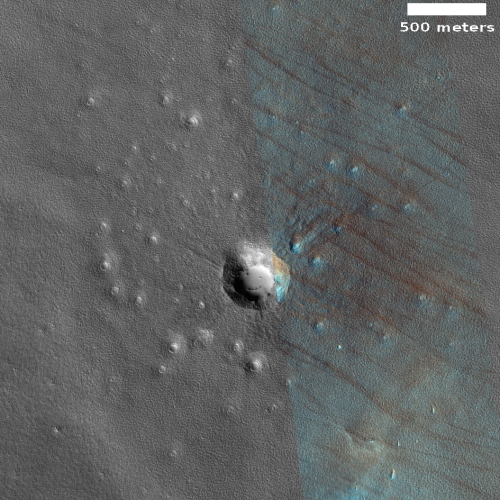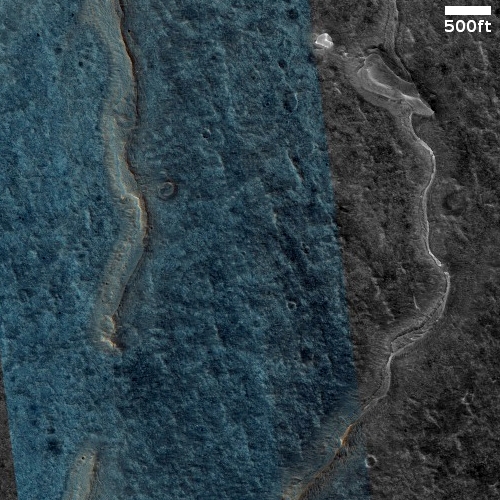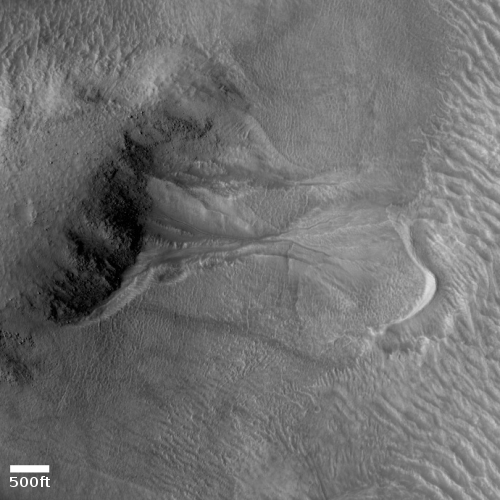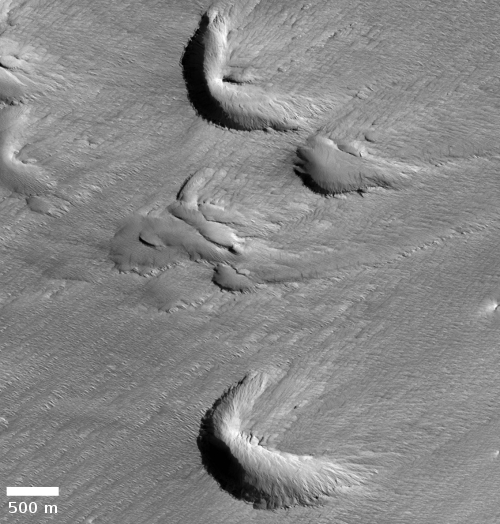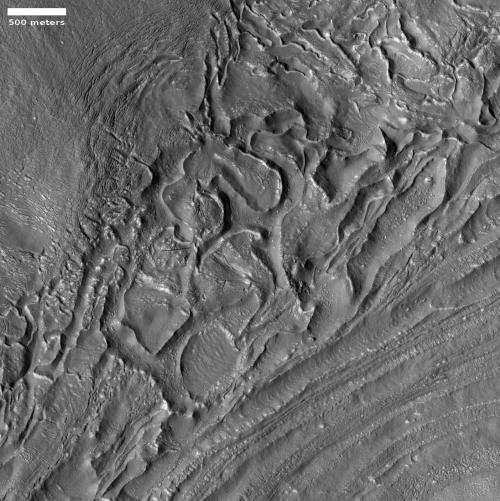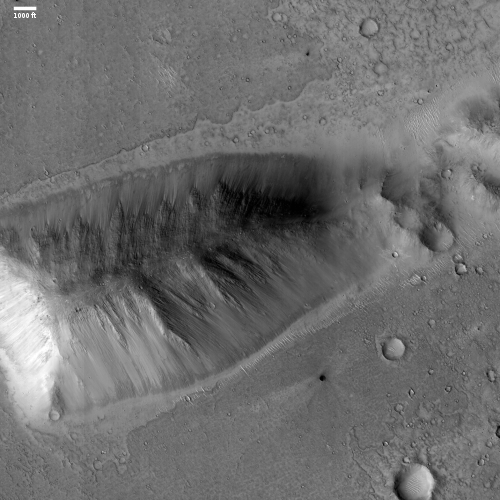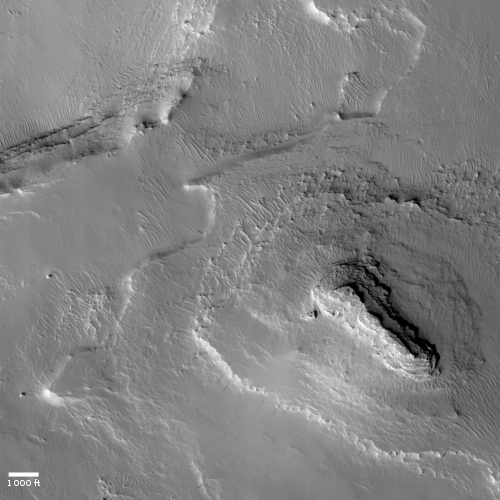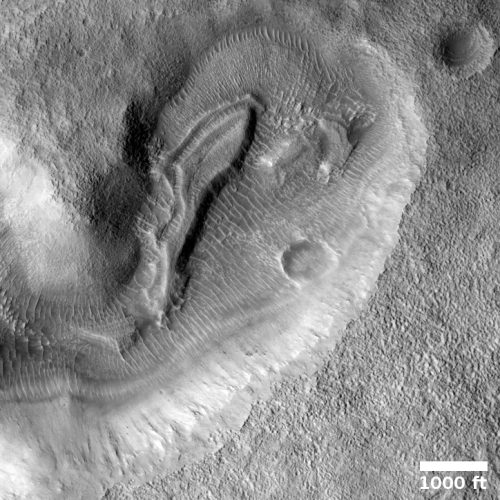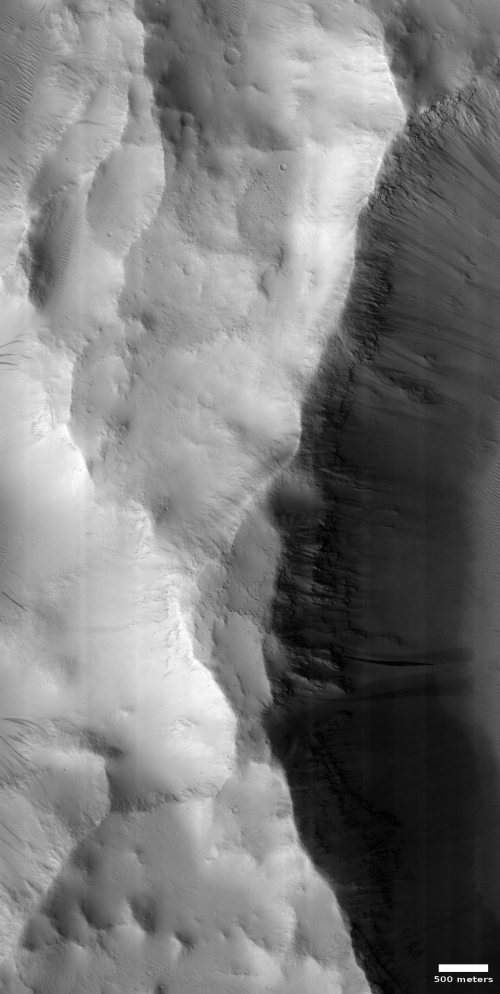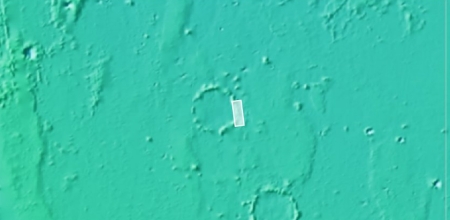Terraced mesas in Martian crater
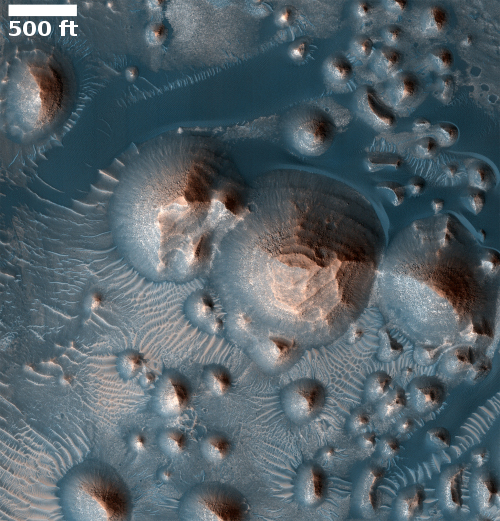
Click for full resolution image.
The cool image to the right, reduced and annotated to post here, was a captioned photo released by the Mars Reconnaissance Orbiter (MRO) science team earlier this week. Taken by MRO’s high resolution camera, it shows in color a beautifully stair-stepped mesa located in an unnamed 22-mile-wide equatorial crater in Arabia Terra, the large transitional zone between the lowland northern plains and the southern cratered highlands. As the caption notes,
Several craters in Arabia Terra are filled with layered rock, often exposed in rounded mounds. The bright layers are roughly the same thickness, giving a stair-step appearance. The process that formed these sedimentary rocks is not yet well understood. They could have formed from sand or volcanic ash that was blown into the crater, or in water if the crater hosted a lake.
If volcanic ash, the layers are signalling a series of equal eruptions of equal duration, which seems unlikely. Water is also puzzling because of the equatorial location. Like yesterday’s mystery cool image, water is only likely here at a time when the red planet’s rotational tilt, its obliquity, was much higher, placing this at a higher latitude than it is today.
Regardless, make sure you look at the full image here. This crater floor is chock-full of more such terraced mesas, some of which are even more striking than the sample above.
I have also posted below the MRO context camera photo of the entire crater.
» Read more

Click for full resolution image.
The cool image to the right, reduced and annotated to post here, was a captioned photo released by the Mars Reconnaissance Orbiter (MRO) science team earlier this week. Taken by MRO’s high resolution camera, it shows in color a beautifully stair-stepped mesa located in an unnamed 22-mile-wide equatorial crater in Arabia Terra, the large transitional zone between the lowland northern plains and the southern cratered highlands. As the caption notes,
Several craters in Arabia Terra are filled with layered rock, often exposed in rounded mounds. The bright layers are roughly the same thickness, giving a stair-step appearance. The process that formed these sedimentary rocks is not yet well understood. They could have formed from sand or volcanic ash that was blown into the crater, or in water if the crater hosted a lake.
If volcanic ash, the layers are signalling a series of equal eruptions of equal duration, which seems unlikely. Water is also puzzling because of the equatorial location. Like yesterday’s mystery cool image, water is only likely here at a time when the red planet’s rotational tilt, its obliquity, was much higher, placing this at a higher latitude than it is today.
Regardless, make sure you look at the full image here. This crater floor is chock-full of more such terraced mesas, some of which are even more striking than the sample above.
I have also posted below the MRO context camera photo of the entire crater.
» Read more

